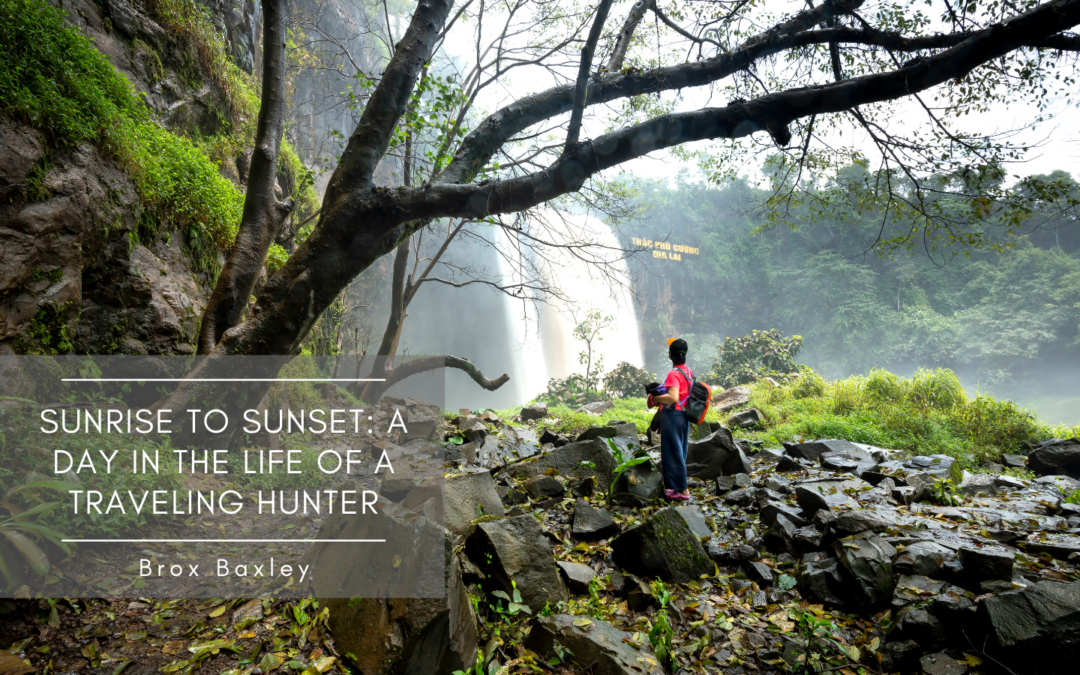For a traveling hunter, every day in the field is a blend of excitement, endurance, and meticulous planning. Whether chasing elk in the Rocky Mountains or stalking whitetail in the Midwest, a day in the life of a hunter on the move involves a combination of preparation, patience, and persistence. From the first light of day until the last moments of twilight, here’s a look at the typical routine of a traveling hunter.
1. Pre-Dawn: Preparing for the Day
The day begins well before sunrise. A traveling hunter knows that success relies on early starts, so they’re often awake long before the sun. The first task is always checking the weather forecast to ensure the conditions align with the planned hunt. Then, it’s time for a quick breakfast and final preparations—packing up gear, double-checking rifles or bows, and ensuring that the necessary hunting permits are in order.
Packing light but efficiently is key. Essentials include a reliable backpack with water, snacks, extra clothing, and a first aid kit. Hunters also make sure their gear is ready for the terrain—whether that’s waterproof clothing for wet conditions or additional layers for colder mornings.
2. Dawn: Into the Field
As the sun begins to rise, the real work starts. Traveling hunters aim to get to their hunting spots before daylight breaks to avoid spooking the game. Early morning is often the most productive time, with animals emerging from their bedding areas and becoming more active as they forage for food.
Walking quietly through the terrain, hunters use their knowledge of the landscape, keeping an eye out for animal tracks, fresh signs of activity, or any noise that might indicate the presence of game. Stealth is critical—any misstep or loud noise could send wildlife fleeing.
3. Midday: Patience and Observation
By midday, hunting becomes more about patience and observation. After covering significant ground in the early hours, a hunter may choose to sit quietly in a tree stand or blind to wait for game to pass by. This period often involves long stretches of inactivity, where hunters have to remain alert, even though the chances of spotting game are lower than at dawn or dusk.
During this time, hunters might review their strategy, scout new areas, or take a break to refuel and hydrate. It’s a crucial time for recharging before the afternoon push.
4. Evening: The Final Push
As evening draws near, the temperature drops, and wildlife begins to stir again. This is often the most intense period of the day, as animals prepare for their evening routines. Hunters, now rested from the midday lull, head out again, often moving silently toward new hunting spots.
The twilight hours are prime hunting time, with animals feeding and crossing open spaces in search of food or water. As the light fades, hunters must be prepared to make quick decisions for shots while maintaining their safety.
5. Dusk: Wrapping Up
As darkness sets in, the hunt officially ends for the day. Hunters carefully pack up their gear and begin the trek back to camp or their vehicle. After a long day in the field, it’s time to reflect on the day’s success—whether it’s the satisfaction of a successful hunt or valuable lessons learned from what didn’t go as planned.
Dinner and rest are essential before repeating the process the next day. A traveling hunter’s life is demanding, but it offers unparalleled rewards, both in the field and the memories created along the way.
Conclusion
From sunrise to sunset, the life of a traveling hunter is defined by dedication, patience, and a love for the wilderness. Every hunt presents new challenges, but it also offers an incredible connection to nature and the satisfaction of knowing that each day is spent pursuing one’s passion.

